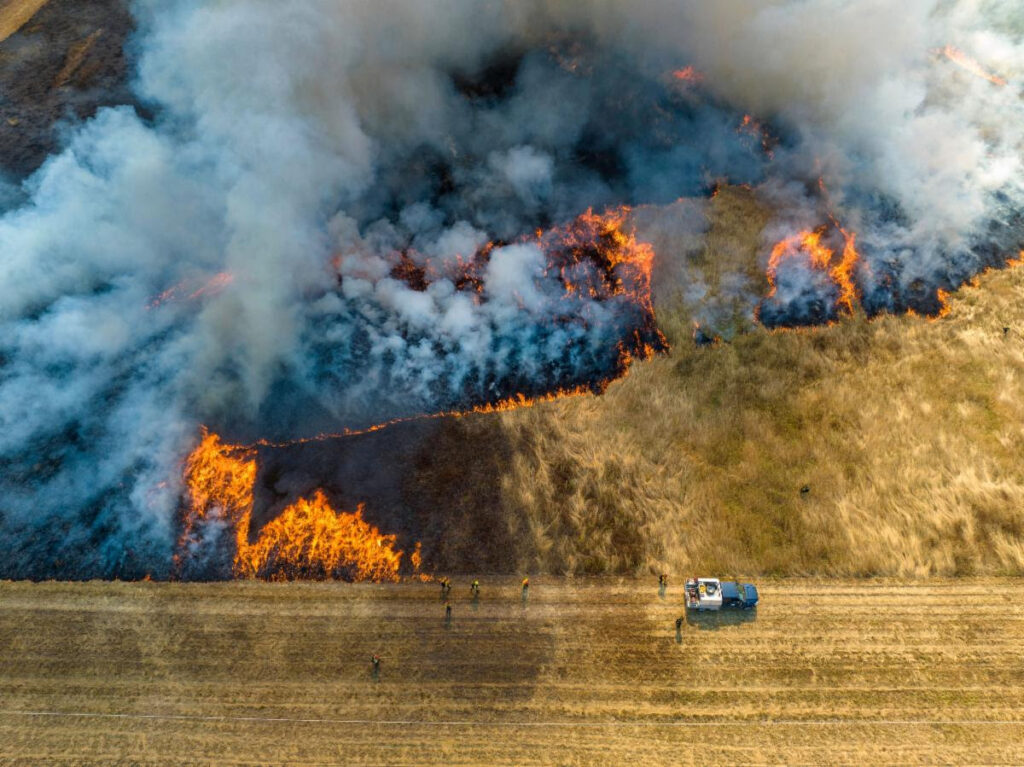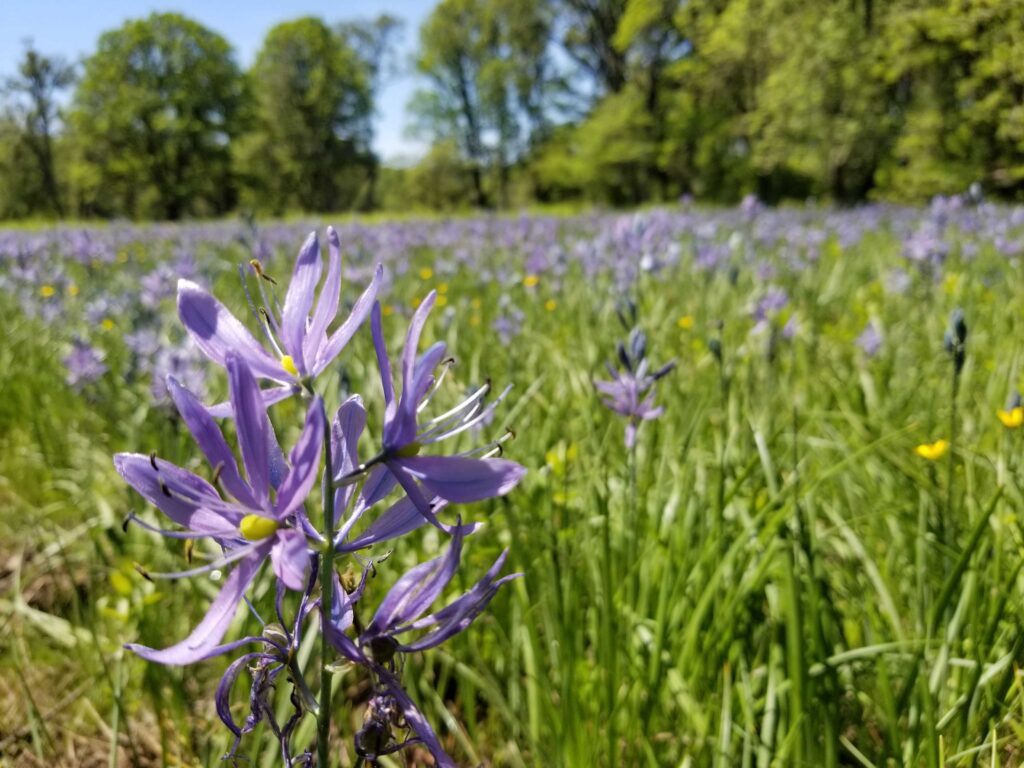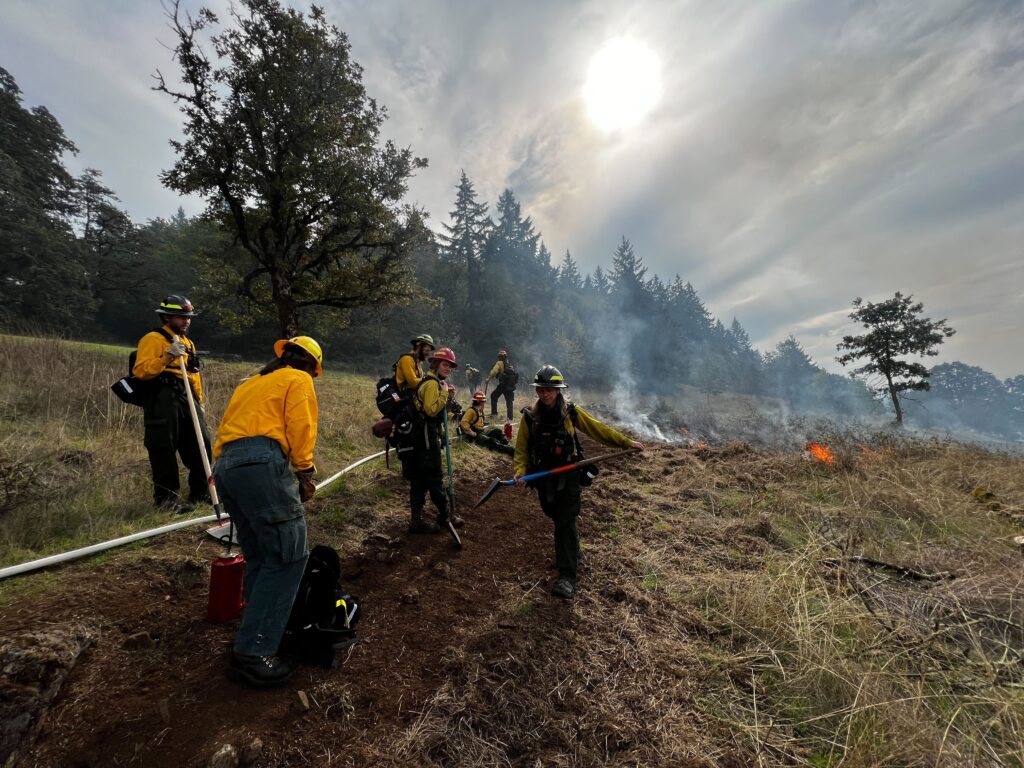
Each fall in the Willamette Valley, local conservation organizations work together to help bring ecological fire back to the landscape to benefit natural areas around Eugene and Springfield. This work usually happens between September and early November when professional land managers can take advantage of favorable wind and weather conditions to conduct controlled ecological burns.
Unlike wildfires, ecological burns are planned and conducted in a way that minimizes negative impacts on neighbors. Ahead of each burn, weather, humidity, and wind conditions are closely monitored to meet specific safety standards. To protect sensitive populations, partners work in close collaboration with the Lane Regional Air Protection Agency (LRAPA) to reduce risks to local air quality conditions.

Ecological burning in natural areas benefits native prairie, savanna, and oak woodland habitats while also reducing the potential for severe, high-intensity wildfires by removing built up fuels including dense shrubs and thatch. Each fall, partners work together across our region to include controlled ecological burning in areas where habitat restoration has been completed or is underway. The use of fire is integral in managing Willamette Valley ecosystems which have co-evolved with periodic low intensity fire for thousands of years.
Before Euro-American settlers arrived in the mid-1800s, the Willamette Valley boasted more than 1.5 million acres of prairie and oak savanna habitat. As a result of settlement and agricultural development, much of the native habitat was lost and subjected to habitat fragmentation. Historically, these open habitats were maintained by the cultural practices of the Kalapuya people who actively managed the landscape here, including through the application of ecological fire. This relationship between fire and the landscape supported conditions for many special plant and animal species to evolve with fire and ultimately develop dependence on regular fires for their survival. With less than 2% of prairie and oak savannah and less than 5% of oak woodland habitats remaining in the Willamette Valley, many of these plants and animals are now considered threatened and endangered species.
Ecological burning is different from wildfire. These planned burns are conducted under conditions when the flames can safely be kept low and slow, staying within a planned burn area. Weather conditions are closely monitored ahead of igniting ecological burns to reduce risks of the fire growing too hot, creating too much smoke, or moving too quickly across the landscape. Unlike a wildfire, ecological burns move slowly across a planned burn area with temperatures staying low enough for fire personnel to comfortably work adjacent to the flames and maintain control lines.

This fall, McKenzie River Trust anticipates conducting burns on two properties owned and managed by the Trust: Coyote Spencer Wetlands and the Willamette Confluence property. These ecological burns will support native plant and animal communities, reduce fuels that can contribute to wildfires, contribute to quicker soil nutrient recycling, and help to combat invasive species.
Ecological burning is led by Ecostudies Institute and the Oregon Prescribed Fire Council. Additional partners include the Willamette Valley Fire Collaborative, the Rivers to Ridges Partnership, Lane County, the City of Eugene, Friends of Buford Park and Mt. Pisgah, Willamalane, Oregon Department of Forestry, The Nature Conservancy, and others. To learn more about regional ecological burn partnerships and where this work will take place over the fall, visit the City of Eugene online at www.eugene-or.gov/4259/Ecological-Burning.
